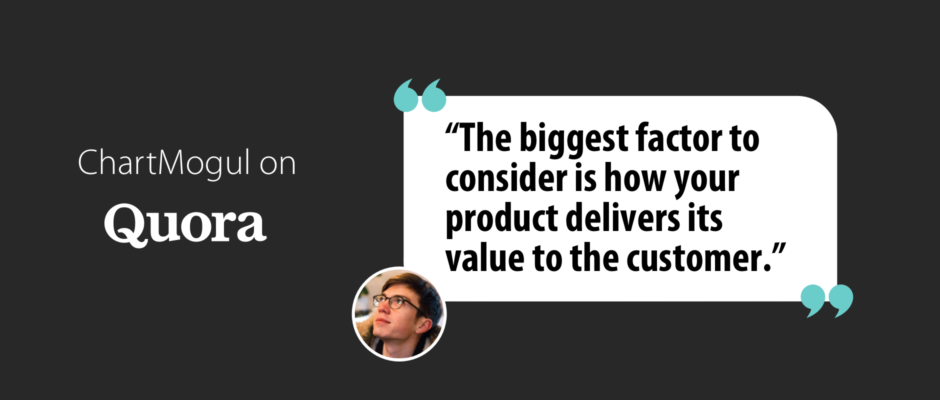Usage-based pricing in SaaS is increasingly common with highly transactional services. When it comes to choosing a billing model, the biggest factor is how your product delivers value to the customer. And by that I mean:
“When your customer pays for your product, what (from their perspective) are they paying for, and how do they get it?”
It’s important to not confuse usage-based pricing with user-based pricing.
USER-based pricing
In products like Helpdesk or CRM solutions, most of the value for the customer is delivered on a per-user basis, meaning that it makes sense to charge for each user license required.
- With 5 support reps: I can use the CRM to solve X tickets per day, which is equates to a certain value.
- With 10 support reps: I can use the CRM to solve Y tickets per day, which represents incremental value to my business over 5 support reps. I therefore pay a greater amount for the service.
User-based pricing is how many SaaS businesses still bill their customers today. It’s proven fairly effective for products that are used by a specific team within a business which scales over time. A typical example of this is selling Helpdesk software to a Support team. As your business scales, your support team will typically scale with it, meaning that you pay more for (expand) your account with the Helpdesk product.
Simple, right? Or is it? There are many other ways to price your service that could be tied more directly to the value seen by customers. One of them is usage-based pricing.
USAGE-based pricing
This can work well in products and services that are more transactional in nature:
- Data services – paying for data, or insights from data
- Cloud storage services – paying for storage
- Payment services – paying to process a payment transaction
In this model, we’re saying that processing one “transaction” in the system equates to some measurable value for the customer. This could also be referred to as “metered” billing — paying for something in the same way you would pay for your energy bill for example, by measuring how much of it you use.
So what are some examples of this?
Example 1: Clearbit

Clearbit is an API-based product, i.e. the value of their product is not delivered through a user interface to a user, but through an API connected to a machine. For these types of transactional products, you’ll almost always find pricing based on “number of requests” made to the API.
Example 2: Stripe

Stripe is a payment solution – a great example of a transactional business. Most Stripe customers would agree that the value they get from the product is on a ‘per-transaction’ basis. And that’s exactly how they charge for the product: “per successful card charge”. This actually allows a great deal of simplicity for customers.
Example 3: Twilio

Twilio allows anyone to program telephony-based features into their application, through an API. Their SMS product is entirely transactional, and as such, the pricing is “per SMS”. Once again, this is the best way for them to measure value for the customer — and also to measure costs to deliver the service.
In Conclusion
Usage-based pricing is fairly common when you look at more infrastructure-based SaaS products — things you might integrate into your platform to build out powerful functionality (like payments) more quickly and easily. All of the above examples are relatively simple to explain to customers.
This post originated as an answer on Quora — Read the full thread here.
